- info@aromantique.co.uk
- 07419 777 451
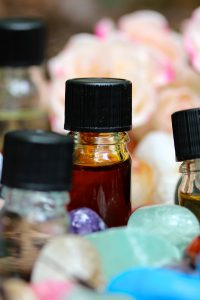 Heather Dawn Godfrey P.G.C.E., B.Sc. (Joint Hon)
Heather Dawn Godfrey P.G.C.E., B.Sc. (Joint Hon)
Gifts of nature, the healing qualities of plants range from physical to ethereal; we are inextricably connected to earths’ web of life.
….you who are born of the mountains and the forests and the sea can find their prayer in your heart. Kahlil Gibran
We share biological affinity with plants; simple examples being gaseous exchange and provision of vital nutrients that maintain and support bodily function, growth, tissue repair, energy production, and more.
In deed, healing plants and their essential oils have been used throughout history for their protective, restorative, rehabilitative, and hedonistic qualities, attributes observed and documented in ancient scriptures and medicinal texts and, more recently, affirmed in scientific journals and numerous research papers. (Godfrey 2022, 2019, 2018)
How essential oils support health and wellbeing
Perfume and incense bring joy to the heart. Proverbs 27:9
Essential oils are aromatic volatile terpene and terpenoid compounds, which are typically extracted from plants (herbs and trees, heart wood, bark, blossoms and flowers, fruits, leaves, stalks, seeds, roots, gums, and resins), mainly by steam distillation, or in the case of citrus fruits, by expression.
The process of extraction increases the concentration of essential oils, thus, their potency too; just one or two drops of essential oil is sufficient to procure significant effect. Applied as an aromatherapy treatment, their molecules are absorbed either via skin (administered in an emollient, such as vegetable oil, cream, lotion or ointment), or the respiratory system through inhalation of their vaporised droplets (applied, for example, via room diffusers, perfumes, or drops on a tissue, steam inhalation, and ‘aromasticks’); inhalation has a direct influence on the limbic (olfactory connection to the brain and neural pathways) and circulatory systems (absorption via alveoli capillaries and thence the organ systems). Certain essential oils are prescribed and administered by professional herbalists, doctors or pharmacists as medicine (contained in gel-like digestible capsules). (Godfrey 2022, 2019, 2018)
Essential oils develop within the plant during the secondary phase of metabolism (along with alkaloids, flavonoids, bitters and gums), a process instigated by photosynthesis. While not vital to the plants existence, essential oils play a significant role. For example, they stave infection, attract pollinators, repel predators, disarm invasive microbes, repair damaged tissue, and control and optimise the ambient environment (temperature and humidity) by creating a haze or mist, an auric vapour, which surrounds the plant (terpenes evaporate at high temperature, and consequently produce air flows that cool the plant and reduce transpiration). They relay messages from one part of the plant to another (thus, they are considered to be ‘hormone-like’), and to other plants in the immediate vicinity. (Godfrey 2022)
Similarly, essential oil molecules modulate various processes within the body. Their properties range across a spectrum, from immune support (anti-bacterial, anti-viral), tissue healing and regeneration, pain relieving, restorative, digestive, to psycho-somatic, revitalising, anti-anxiety, anti-depressant, uplifting, calming and grounding, and more. They are multi dynamic adaptogens (that is, they support the immune system and the body’s resilience to infection, disease and stress); they stimulate the limbic system (the emotional brain) to modulate mood and emotion, and stimulate hormone balance via the limbic systems connection to the pituitary gland. (Godfrey 2022, 2019, 2018)
Olfactory and endocannabinoid receptors
Some of these qualities are attributed, in part, to the affinity certain essential oil molecules (for example, beta-caryophyllene, a-pinene, limonene, linalool, eucalyptol and myrcene – see fig 1) share with the endocannabinoid system – hemp (from which cannabis is derived) contains cannabinoids, also volatile terpenes and phenolic compounds.
Olfactory receptors and endocannabinoid receptors are found scattered throughout the body in numerous organs and tissues (for example, the central nervous system, vascular system, lungs, gastrointestinal tract, reproductive organs, liver, spleen, brain stem, bones and skin). Endocannabinoid receptors are also found in the olfactory epithelium and the main olfactory bulb at the top of the nasal cavity, also the piriform cortex and other brain areas that process and code olfactory information.
Like the olfactory system, the endocannabinoid system plays a role in a range of functions and processes, which include sleep, mood, memory, learning, motor control, skin and nervous function, liver function, muscle formation and food intake, and interacts with the olfactory system to modulate processes such as odour sensitivity, olfactory learning and memory. However, the mechanisms by which endocannabinoid and olfactory receptors interconnect and interact are complex and still not completely realised; in deed, olfaction is an intricate process (see ‘scent detection and the olfactory system’ below).
Fig 1. Terpenes found in Hemp (Cannabis), CBD oil, and Essential Oils
beta-caryophyllene – activates CB2 (Cannabidiol) receptors which modulate immune cell function, pain relief and inflammation (also found in Black Pepper, Clove Bud, Melisa (Lemon Balm), and Ylang Ylang).
a-pinene – modulates pain relief and inflammation, promotes relaxation, aids memory and respiratory function, and supports the immune system (anti-oxidant and anti-infectious) (also found in Frankincense sacra, Cypress, Helichrysum (Immortelle), Juniper berry, Myrtle, Nutmeg, Pine, and Rosemary).
limonene – modulates the immune system, modulates inflammation, anti-tumour, eases bronchial conditions and soothes allergies (also found in Bergamot, Caraway, Grapefruit, Black Pepper, Bitter Orange, Lemon, Mandarin, and Palo Santo).
linalool – modulates pain relief and inflammation, supports the immune system (anti-infectious), protects the nervous system, eases anxiety and depression (also found in Basil linalool, Clary Sage, Coriander, Hyssop linalool, Lavender, Marjoram linalool, Neroli, Petitgrain, Thyme linalool, Ho Wood, and Ylang Ylang).
eucalyptol (1,8-cineole) – modulates inflammation and cytokine activity, supports the immune system (anti-oxidant, anti-infectious), eases chronic respiratory conditions and other chronic diseases (also found in Eucalyptus, Cajeput, Caraway, Ginger, Hyssop officinalis, Spike Lavender, Myrtle, Niaouli, Rosemary, Spanish Sage, and Tea Tree).
myrcene – supports the immune system (anti-oxidant, anti-infectious), eases neurological conditions (such as dystonia, epilepsy and Parkinson’s disease), and promotes relaxation (also found in Rosemary, Juniper Berry, Frankincense sacra, Lemongrass, and Yarrow).
(See my book Healing with Essential Oils to discover more about the chemical constituents found in essential oils.)
The olfactory system and scent detection
Be like the flower, turn your face to the sun. Kahlil Gibran
Scent molecules (terpenes and terpenoids) are detected (like a key in a lock) by olfactory receptors located at the top of each nasal cavity that, in turn, relay nerve impulses to the Limbic System located in the brain. As previously observed, odour receptors are also located in other areas of the body, such as the skin and other organs (heart, liver, lungs, kidneys and gastrointestinal tract). However, by grand design, it seems, proximity of the master olfactory portal in the roof of the nasal cavity ensures immediate awareness and instinctive reflexive responses.
The Limbic System incorporates various functional structures located in the central paleomammalian area of the brain (which include the amygdala, hippocampus and hypothalamus) that are responsible for basic physiological and emotional responses to sensory stimulation. The hypothalamus functionally connects the Limbic System to the frontal lobe (where the brain rationalises and makes sense of information and sensory input) and to the pituitary gland. The pituitary gland, also known as the master endocrine gland, initiates hormone release in response to sensory signals, activating either the sympathetic or parasympathetic nervous system, depending on the nature of the stimuli; the sympathetic nervous system prepares the body for ‘fight or flight’ (protection), and the parasympathetic nervous system maintains a state of peace and relaxation (rest and digest), and disengages the sympathetic nervous system post ‘alert’, returning the body to its optimal functional resting state.
When inhaled, some essential oil molecules will cross the blood brain barrier (especially sesquiterpenes, which are found, for example, in frankincense, carrot seed, cedarwood, German chamomile, ginger, helichrysm, myrrh, black pepper, patchouli, spikenard, and ylang ylang) where they interact with various receptor sites, such as, GABA and glutamate receptors, located in the hippocampus, thalamus, basal ganglia, hypothalamus, and brainstem (GABA is an amino acid that functions to reduce neuronal excitability by inhibiting nerve transmission).
The mechanisms by which essential molecules are absorbed and interact within the body are very complex and, although modern technology affords much insight, are still not fully realised. However, our body is clearly ‘wired’ to receive phyto-molecules; verified by the presence of numerous (olfactory and endocannabinoid) receptor sites scattered throughout the body and the multilateral physical and psychosomatic responses instigated by detection.
(Godfrey 2022, 2019, 2018)
Healing with Essential Oils
Rose (Rosa centifolia/damascena) provides a lovely example of how diverse the action of essential oils can be. The qualities of rose range from hedonistic, aphrodisiac, anti-depressant, hypnotic, and anti-convulsive, to anti-oxidant, anti-inflammatory, analgesic, antitussive (relieves coughs), antibacterial, and bronchodilatory.
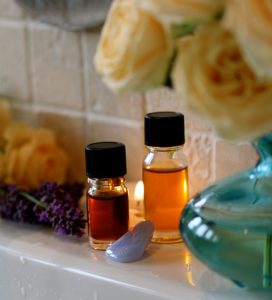 Some of the molecules found in rose oil are barely detectable yet these synergistically contribute significantly to its scent and therapeutic properties (synergy is not unique to rose oil as most essential oils demonstrate synergistic interaction between some or all of their constituents).
Some of the molecules found in rose oil are barely detectable yet these synergistically contribute significantly to its scent and therapeutic properties (synergy is not unique to rose oil as most essential oils demonstrate synergistic interaction between some or all of their constituents).
To illustrate, citronellol and geraniol, are predominant components found in rose essential oil, both of which exude floral, sweet, rose-like scents, yet the perfume of the complete essential oil is acknowledged as rich, intense, sweet, powerful beeswax-like, highly floral, rosy, with waxy, floral, spicy, green, metallic, body notes, then tenacious warm floral spicy dry out notes.
Floral, sweet, rose-like scents are also observed amongst constituent ‘notes’ in other essential oils that contain citronellol (for example geranium and citronella), and geraniol (for example, bergamot, palmarosa, thyme, and geranium). Each molecule comprising an essential oil contributes a unique ‘tone’ that combines with other molecules in various arrangements to create specific ‘tunes’ or ‘melodies’.
(Godfrey 2022)
That which we call a rose, by any other name would smell as sweet. Shakespeare, Romeo and Juliette
Lavender (Lavandula angustifolia) provides another illustration. Linalool and linalyl acetate are two predominant compounds found in this essential oil, collectively making up to 90% of lavenders chemical constituents.
The scent profile of linalool is described as citrus, floral, sweet, woody and green, and linalyl acteate, is described as sweet, green, floral and spicy, with a clean woody, terpy, citrus nuance.
Linalool is sedative, analgesic and anti-inflammatory, and also features in large quantity in other essential oils, such as, ho wood, rosewood, thyme (CT. linalool), marjoram (CT. linalool), and basil (CT. linalool).
Linalyl acetate is anti-inflammatory, sedative, relaxant and anti-hypertensive, and is present in high amount in Clary sage, petitgrain, rose, mints and bergamot FCF essential oils.
Lavender angustifolia’s overall therapeutic profile is, including those qualities mentioned above, anti-depressant, anti-microbial, antiseptic, anti-spasmodic, anti-toxic, anti-viral, bactericidal, cleansing, deodorant, hypotensive, skin healing and toning.
Spike Lavender (Lavandula latifolia), on the other hand, contains linalool and, in place of linalyl acetate, 1,8-Cineole (Eucalyptol) and a lesser amount of Camphor. 1,8-Cineole is expectorant, anti-inflammatory, antispasmodic and improves cerebral blood flow; its scent is ‘eucalyptus-like’. Camphor instigates vasodilation (dilates blood vessels and decreases blood pressure); its scent is fresh and warm. The overall scent profile of Spike Lavender thus differs from Lavender angustifolia and is accordingly described as eucalyptus, herbal, camphor, and medicinal.
These examples demonstrate how intricate and complex essential oils are. Each essential oil comprises a unique array of chemical constituents, the presence and quantity of which synergistically determine and distinguish that oils scent dynamic and therapeutic properties and qualities.
As previously established, essential oils are generally physically protective and restorative and psycho-emotionally vitalising, warming, grounding and calming. Their actions complement and gently support at one and the same time physical, mental and spiritual states.
In deed, the perception of scent instantly instigates a reflexive response within the brain that may inspire mood and emotion, compound and/or trigger memories, and conjure images – a blossoming garden in summer, woody earthy forests in spring, sweet citrus orchards in autumn, – or simply but significantly, instil feelings of peace and calm, of feeling bright and awake, and more.
The sensual experience of scent detection also draws attention to the moment, thus essential oils are wonderful companions for meditation, prayer and for moments when we simply want to centre our attention in the here and now. Thus, they are ideal companions to call upon when dealing with stress and stress related issues, including mild depression, anxiety, feelings of loss and grief, or to journey with through change and transition, or simply to compound and celebrate wellness, wellbeing, a sense of contentment, and joyful events.
The sense of smell is very personal; what one person finds pleasant another person may dislike or feel indifferent toward. Using our own nose, however, we are usually able to detect which scent is good for us at a given moment.
The essential oils listed below are among those most frequently cited as being anti-depressant and anti-anxiety, uplifting and calming. These oils may also alleviate stress related conditions, such as, insomnia, headaches, and skin disorders (eczema, psoriasis and so on), and more.
Essential oils to harmonise mood and emotion
Bergamot
Cedarwood
Chamomile Roman
Citronella
Clary sage
Corriander
Frankincense
Geranium Rose
Grapefruit
Lavender
Lemon balm (Melissa)
Lemongrass
Marjoram
Neroli
Orange
Patchouli
Peppermint
Petitgrain
Rose
Rosemary
Sandalwood
Spikenard
Vetivert
Ylang Ylang
Applying essential oils
Remember, do not apply essential oils neat to your skin, but add one or two drops to an emollient, and do not take essential oils internally unless administered, prescribed and monitored by a professional healthcare practitioner.
Vaporising a few drops of essential oils in a room diffuser, or inhaling one or two drops on a tissue or from a nasal inhaler, or applied as a personal perfume infused in vegetable oil ( applied via massage or roller bottle) or cream, are all fun, safe and very effective ways to dispense essential oils in order to experience their scents and benefit from their physical and psycho-emotional gifts.
Self-massage is also a lovely way to apply essential oils (essential oil molecules penetrate the epidermis and find their way into the circulatory system). For example, add three to six drops of essential oil to a vegetable oil or non-perfumed lotion, and then apply, using a rhythmic motion (stroking or circular movements) to face, arms, hands, legs and feet – ideally after a bath or before bed.
Go to your fields and your gardens, and you shall learn that it is the pleasure of the bee to gather honey of the flower, but it is also the pleasure of the flower to yield its honey to the bee. For to the bee a flower is a fountain of life, and to the flower a bee is a messenger of love, and to both, bee and flower, the giving and the receiving of pleasure is a need and an ecstasy. Kahlil Gribran
You will find valuable insight, practical details and reference information about the various qualities of these and numerous other essential oils in my book Healing with Essential Oils, and my other books Essential Oils for the Whole Body and Essential Oils for Mindfulness and Meditation (published by Inner Traditions, Vermont USA and available to purchase from most high street or online book suppliers).
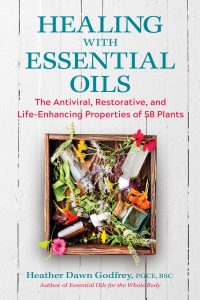
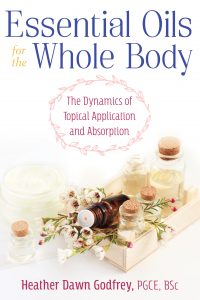
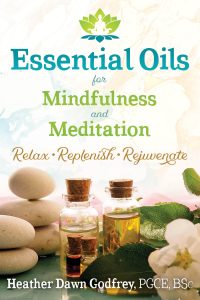
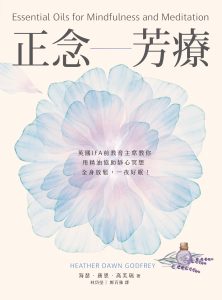
References
Agatonovic-Kustrin, S., Kustrin, E., Morton, D. W. (2019) Essential oils and functional herbs for healthy aging. National Library of Medicine. PubMed. Neural Regen Res. 14(3): 441-445. https://pubmed.ncbi.nlm.nih.gov/30539810/
Ali, B., Al-Wabel, N. A., Shams, S., Ahamad, A., Khan, A. A., Anwar, F. (2015) Essential oils used in aromatherapy: A systematic review. Asian Pacific Journal of Tropical Biomedicine, Elsevier volume 5 issue 8 p 601-616. https://cyberleninka.org/article/n/3650/viewer
Charmine, I. PhD, Oken, B. MD, PhD (2016) Aroma Effects on Physiologic and Cognitive Function Following Acute Stress: A Mechanism Investigation. Journal of Alternative and Complementary Medicine. 1; 22(9): 713-721. https://pubmed.ncbi.nlm.nih.gov/27355279/
Clarke, S. (2002) Essential Chemistry for Safe Aromatherapy. Churchill Livingstone. Harcourt Publishers, London
de Sousa, D. P. (2017) Essential Oils and Their Constituents: An Alternative Source for Novel Antidepressants. Molecules, 20(8): 1290. https://www.ncbi.nlm.nih.gov/pmc/articles/PMC6152054/
do Vale T.G., Furtado E.C., Santos Jr J. G., Viana G.S.B. (2002) Central effects of citral myrcene and limonene, constituents of essential oil chemotypes from Lippia alba (Mill.) n.e. Brown. NIH National Library of Medicine 9(8):709-14. https://pubmed.ncbi.nlm.nih.gov/12587690/
Ebrahimi, H., Mardani, M., Basirinezhed, M. H., Hamidzadeh, A. Eskandari, F. (2021) The effects of Lavender and Chamomile essential oil inhalation aromatherapy on depression, anxiety and stress in older community dwelling people: A randomized Controlled trail. Explore (NY). S1550-8307 (21)00001-X. https://pubmed.ncbi.nlm.nih.gov/33454232/
Emer, A. A., Donatello, N. N., Batisti, A. P., Belmonte, L. A. O., Santos, A. R. S., Martins, D. F. (2018) The role of the endocannabinoid system in the antihyperalgesic effect of Cedrus atlantica essential oils inhalation in a mouse model of postoperative pain. Journal of Ethnopharmacology, Elsevier, vol 210 p 477- 484 https://pubmed.ncbi.nlm.nih.gov/28917977/
Fung, T. K. H.; Lau, B. W. M.; Ngai, S. P. C.; Tsang, H. W. T. (2021) Therapeutic Effect and Mechanisms of Essential Oils in Mood Disorders: Interaction between the Nervous and Respiratory Systems. International Journal of Molecular Science 22(9): 4844
Gibran, K . (1980) The Prophet, Wlliam Heinmann, Pan Books. ISBN 0-330-26220-3
Godfrey, H. D. (2022) Healing with Essential Oils. Healing Arts Press, Rochester, Vermont USA
Godfrey, H. D. (2019) Essential Oils for the Whole Body. Healing Arts Press, Rochester, Vermont USA
Godfrey, H. D. (2018) Essential Oils for Mindfulness and Meditation. Healing Arts Press, Rochester, Vermont USA
Gupta, A., Coogler, G. (sourced June 2021) Traditional plants that engage the endocannabinoid system and their medicinal potential. Canna Foundation (Scientific studies and cannabis testing. https://www.fundacion-canna.es/en/traditional-plants-engage-endocannabinoid-system-and-their-medicinal-potential
Han, X., Gibson, J., Eggett, D. L., Parker, T. L. (2017) Bergamot (Citrus bergamia) Essential Oil Inhalation Improves Positive Feelings in the Waiting Room of a Mental Health Treatment Centre: A Pilot Study. DOI: 10.1002/ptr.5806. 31(5): 812-816. https://pubmed.ncbi.nlm.nih.gov/28337799/
Herz, R. (2016) The Role of Odour Evoked Memory in Psychological and Physiological Health. Brain Science vol 6(3). https://www.ncbi.nlm.nih.gov/pmc/articles/PMC5039451/
Hogratanaworakit, T (2009) The Relaxing effect of rose oil on humans. National Library of Medicine. PubMed. Nat Prod Commun. PMID: 19370942. 4(2):291- 6. https://pubmed.ncbi.nlm.nih.gov/19370942/
Johnson, S. A., Rodriguez, D., Allred, K. (2020) A Systematic Review of Essential Oils and the Endocannabinoid System: A Connection Worthy of Further Exploration. Hindawi Journals. Evidence-Based Complementary and Alternative Medicine.. Article ID 8035301. https://www.hindawi.com/journals/ecam/2020/8035301/
Lillehei, A. S., Halcon, L. L. (2013) A systematic review of the effect of inhaled essential oils on sleep. Journal of Alternative and Complementary Medicine. DOI: 10.1089/acm.2013.0311. 20(6): 441-51. https://pubmed.ncbi.nlm.nih.gov/24720812/
Lizarraga-Valderrama, L. (2021) Effects of essential oils on central nervous system: Focus on mental health. Phytotherapy Research. DOI: 10.1002/ptr.6854. 35(2): 657-679. https://onlinelibrary.wiley.com/doi/full/10.1002/ptr.6854
Maleki, N. A., Maleki, S. A., Bekhradi, R. (2013) Suppressive Effects of Rosa Damascena Essential Oil on Naloxone-Precipitated Morphine Withdrawal Signs in Male Mice. Iran Journal of Pharmaceutical Research. PMCID: PMC3813277. https://pubmed.ncbi.nlm.nih.gov/24250642/
Olofsson, J. K., Ekstrom, I., Lindstrom, J., Syrjanen, E., Stigsdotter-Neely, A., Nyberg, L, Jonnson, Sara, Larsson, M. (2020) Smell-Based Memory Training: Evidence of Olfactory Learning and Transfer to the Visual Domain. Chemical Senses, Oxford Academic volume 45 issue 7 p 593-600. https://academic.oup.com/chemse/article/45/7/593/5869423
Peana, A. T., D’Aquila, P. S., Panin, F., Serra, G., Pippia, P., Moretti, M. D. L. (2002) Anti-Inflammatory activity of linalool and linalyl acetate constituents of essential oils. Phytomedicine. National Library of Medicine. PubMed 9(8): 721-6. https://pubmed.ncbi.nlm.nih.gov/12587692/
Pereira I., Severino P., Santos A.C., Silva A.M., Souto E.B. (2018) Linalool bioactive properties and potential applicability in drug delivery systems. Colloids and Surfaces B Biointerfaces 171:566-578. NIH National Library of Medicine https://pubmed.ncbi.nlm.nih.gov/30098535/
Salehi B., Upadhyay S., Orhan I.E. Jugran A.K., Jayaweera S.L.D., Dias D.A., Sharopov F., Taheri Y., Martins N., Baghalpour N., Cho W.C. Sharifi-Rad J. (2019) Therapeutic Potential of a- and B-Pinene: A Miracle Gift of Nature. Biomolecules NIH National Library of Medicine 9(11): 738 https://www.ncbi.nlm.nih.gov/pmc/articles/PMC6920849/
Sanchez-Vidana, D. I., Ngai, S., P-C, Chow, J. K-W Chow, Lau, B. W-M, Tsoan, H. W-H (2017) The Effectivess of Aromatherapy for Depressive Symptoms: A Systematic Review. Evidence Based Complementary and Alternative Medicine. 5869315. https://www.hindawi.com/journals/ecam/2017/5869315/
Soel G.H., Kim K.Y. (2016) Eucalyptol and its role in chronic diseases. Advances in Experimental Medicine and Biology. NIH National Library of Medicine 929:389-398 https://pubmed.ncbi.nlm.nih.gov/27771935/
Setzer, W. N. (2009) Essential Oils and anxiolytic aromatherapy. Sage Publications, Journal of Natural Product Communications vol 4 no 9 p 1305- 1316.
Terral, G., Marsicano, G., Grandes, P., Soria-Gomez, E. (2020) Cannabinoid Control of Olfactory Processes: The where it matters. PMC7230191. Genes (Basal) 11(4): 431. https://www.ncbi.nlm.nih.gov/pmc/articles/PMC7230191/
The Good Scents Company (accessed July 2021) http://www.thegoodscentscompany.com/data/rw1007872.html
Tisserand, R., Young, R. (2014) Essential Oil Safety 2nd ed. Churchill Livingstone, Elsevier, London
Turcotte C., Blanchet M-R, Laviolette M., Flamand N. (2016) The CB2 receptor and its role as a regulator of inflammation. Springer Cellular and Molecular Life Sciences 73(23): 4449-4470 https://www.ncbi.nlm.nih.gov/pmc/articles/PMC5075023/
Yu L., Yan J., Sun Z. (2017) D-limonene exhibits anti-inflammatory and antioxidant properties in an ulcerative colitis rat model via regulation of iNOS, COX-2, PGE2 and ERK signalling pathways. Molecular Medicine Reports. Spandidos Publications 6241 p 2339-2346 https://www.spandidos-publications.com/mmr/15/4/2339

Heather Dawn: Godfrey. P.G.C.E., B.Sc. (Joint Hon)
Author of Healing with Essential Oils, Essential Oils for the Whole Body, and Essential Oils for Mindfulness and Meditation, published by Healing Arts Press, Inner Traditions USA.
We are surrounded by viruses and other microbes with which we share a symbiotic and, mostly, healthy and supportive relationship. Some microbes are pathogenic, and some become pathogenic if they proliferate without being kept in check. A healthy immune system works in collaboration with viruses and microbes to maintain internal equilibrium and resilience.
COVID-19 is a novel virus with mild to severe symptoms. In most cases people are not even aware they are infected; between 80 and 95% of those infected (depending on their background health) experience no symptoms or mild ‘flu-like symptoms and recover without ill effect. Some people, particularly the very elderly and people who have underlying serious or chronic co-morbidities, experience severe or acute symptoms (a chronic cough, chest tightness, shortness of breath, cognitive dysfunction and extreme fatigue), which may last five to seven days; these symptoms may linger for up to twelve weeks, or even longer in some cases (Post COVID-19 Syndrome).
One of the less severe, but none-the-less distressing, symptoms of COVID-type infection is loss of the sense of smell. Recent research indicates that essential oils have a significant role to play as aids to recovery of viral initiated loss of sense of smell.
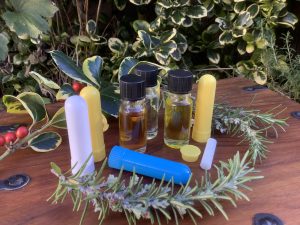 While viral infection may ‘take down’ the ability of olfactory neurons to register scent molecules, some scent molecules can still traverse the epithelium and directly enter the brain. Smelling a scent may evoke memories, feelings and sensations, and inspire imagination, in a way that may begin to re-awaken or stimulate olfactory neural pathways. At the same time, essential oil molecules may also aid tissue regeneration and repair the olfactory epithelium.
While viral infection may ‘take down’ the ability of olfactory neurons to register scent molecules, some scent molecules can still traverse the epithelium and directly enter the brain. Smelling a scent may evoke memories, feelings and sensations, and inspire imagination, in a way that may begin to re-awaken or stimulate olfactory neural pathways. At the same time, essential oil molecules may also aid tissue regeneration and repair the olfactory epithelium.
Putting this to the test, four essential oils (clove, eucalyptus globulus, lemon and rose) were selected for ‘smell training’ exercises. (Hopkins 2021, Hummel 2018, 2009) Between them, these oils express a diverse and complex range of scent nuances, while each essential oil also exudes its own unique and distinctive odour quality. These chosen scents also express odour qualities that correlate with three of the four basic tastes (sweet, bitter and sour). Forty five per cent of smell training participants regained their sense of smell.
Along with their sensual qualities and tissue healing properties, these oils also demonstrate anti-viral and anti microbial qualities, and various psycho-emotional qualities, that may alleviate other post-viral symptoms of COVID-19, such as fatigue, depression, and lack of concentration, while also staving residual infection and averting further viral spread.
To learn more about viruses, essential oils that may support olfactory rehabilitation and/or may alleviate other related conditions or co-morbidites, please refer to my full article here.
Please refer to my books for information about the individual properties and qualities of essential oils, and how to apply them safely and effectively: Healing with Essential Oils, Essential Oils for the Whole Body, and Essential Oils for Mindfulness and Meditation, published by Healing Arts Press, Inner Traditions USA.
References
Hopkins, C. Prof. (8th January 2021) Hope for recovery for loss of smell for COVID patients. Sky News Interview https://www.facebook.com/watch/?v=857906648400464
Hummel, T. (2018) A simple flu, and simple infection: how effective is smell training at curing infection? BCC News interview. https://www.bbc.co.uk/news/av/science-environment-46386497
Hummel, T., Rissom, K., Redden, J., Hahner, A.,Weidenbecher, M., Huttenbrink, K-B. (2009) Effects of Olfactory Training in Patients with Olfactory Loss. Laryngoscope. https://onlinelibrary.wiley.com/doi/abs/10.1002/lary.20101
Here is my latest radio interview with Ellen Kamhi, the Natural Nurse, talking about my new book Healing with Essential Oils and applying essential oils.
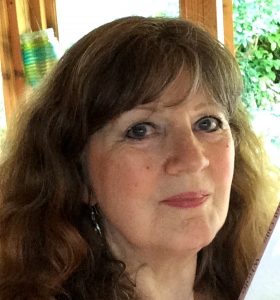

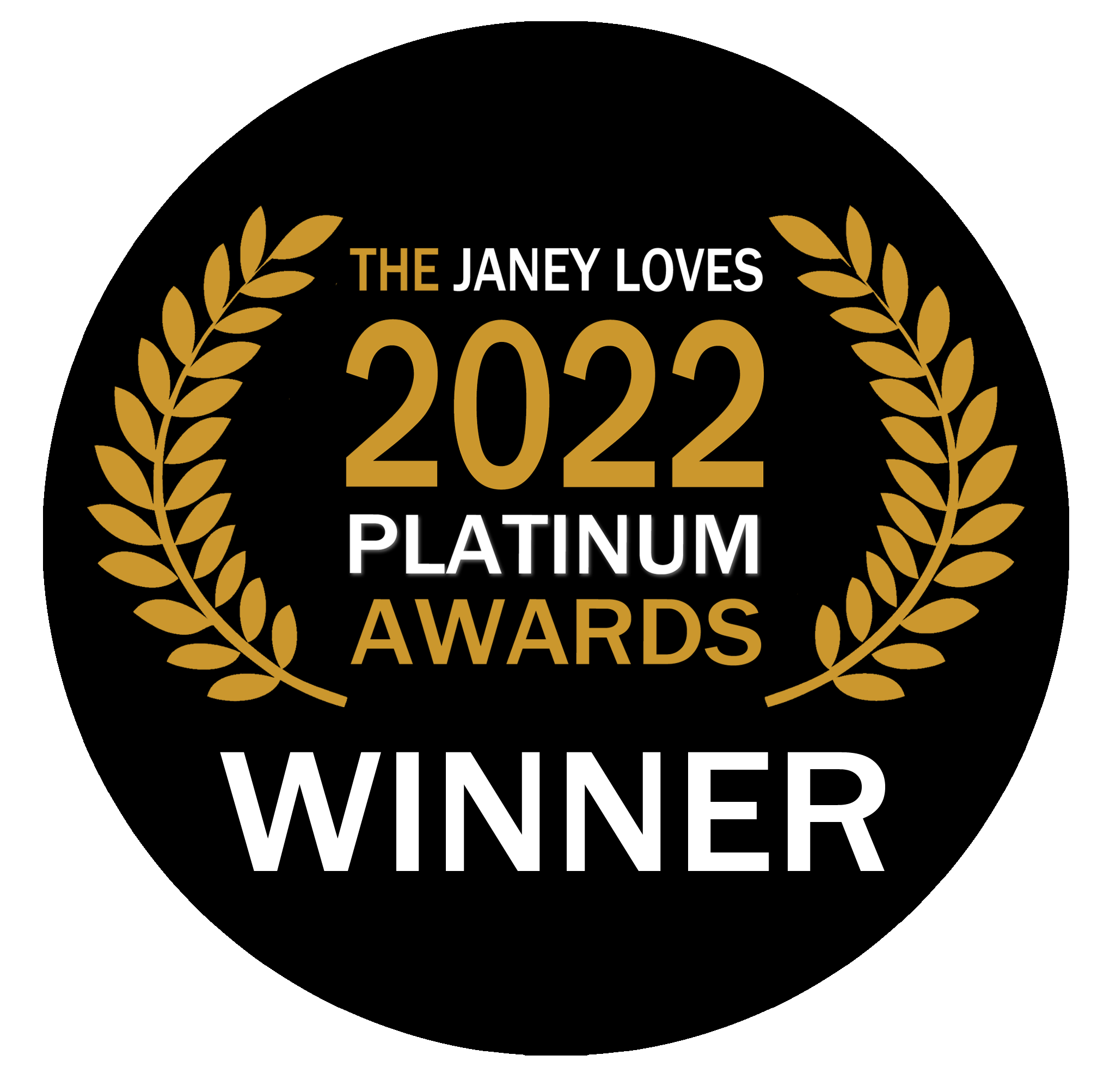
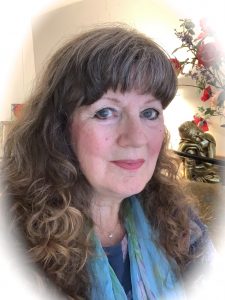
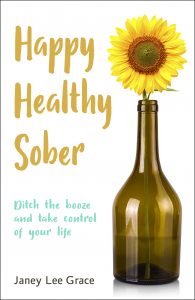 I am thrilled and honoured Janey asked me to contribute to her best selling new book, Happy Healthy Sober.
I am thrilled and honoured Janey asked me to contribute to her best selling new book, Happy Healthy Sober.
This is a lovely positive and upbeat book which explores ways to ‘ditch the booze’ and, in fact, other self-defeating habits we might cling to in order to ‘get through’.
Janey presents a candid overview of her own experience ‘ditching the booze’, sharing with the reader her struggles, but also, significantly, her incredible sense of liberation.
Janey reminds us that the locus of personal control is just one fulfilled intention away – that is, to value and love oneself. Taking control and exercising self-discipline is the ultimate paradox, the rewards are unimaginable; from the steel of resolve burst forth a multi-coloured fountain of possibility.
Shaking off the shackles of comforting, self-soothing habits, however, is not easy – the voice that insidiously whispers ‘just one more….’, ‘you’ve earned….’, ‘you deserve….’, ‘it helps me relax….’, ‘tomorrow…’, reassuring and conveniently persuasive.
But do not despair, Janey has this well covered (remember, she has been there too). Her thirty-day challenge, for example, supports the reader through the initial, often most challenging phase of sobriety. With her eye on the road ahead, she includes useful tips that cover all aspects of holistic wellbeing, from self-care, fitness, nutrition to mind-set and spirituality. There are tips from Sober Club members and contributions from health and wellbeing experts, including my section on the benefits of essential oils! Sobriety, after all, is a way of life, and, far from being restrictive and denying, is enlivening, even fun, as you will discover when you dive into Janey’s book.
Ditching the booze or not, this book offers invaluable insight and support that can be used to aid navigation through these very unusual and challenging times – for example, substitute the word ‘booze’ for any ‘addiction’ or self-comforting or compensatory habit, or simply absorb the words of wisdom and advice of a fellow ‘traveller’ finding her path through the challenges and the ‘up’s’ and ‘downs’ of life.
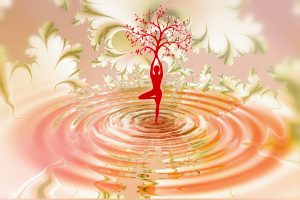
Ellen Kamhi, PhD, RN, AHG, AHN-BC is a leader in the nutraceutical industry, recognised as a consultant specialising in regulatory issues, formulation and product education. She is a professional member of the American Herbalist Guild (AHG), nationally board certified as a holistic nurse (AHN-BC), and is a medical school instructor and author of several top selling books in the Natural Medicine Field.
Ellen, along with Dr Z, interviews a range of healthcare and wellbeing professionals, natural living experts, and authors, on her New York-based radio show (aired globally), exploring numerous topics and issues relating to healthy lifestyle, diet and nutrition, natural antibiotics and remedies, and much more. She recently featured in Oprah Magazine, sharing her extensive knowledge about medicinal herbs.
You will discover details about the fifteen Serenity Oils, and other oils, how to apply essential oils safely, how to blend them together to make pleasing scents and remedies, how to combine essential oils with other subtle elements such as colour, and gemstone, and much much more! These books provide a valuable home use reference and a sound foundation for you to continue to ‘grow’ and build your knowledge. Enjoy!!!
Essential oils have become so popular. It’s nice to have the opportunity to read a book combining mindfulness, meditation and essential oils. I would definitely recommend reading this book. When, how, where and the best time to use the essential oils is outlined throughout the book. A great reference book too. Meryl-Sue (Netgalley)
This book is fantastic! I have utilised it many times and continue going back to it for all the wonderful information that is in it. Lesley J (Netgalley)
This is a great book! It could be your all telling oil book. I learned so much about the oils that I didn’t already know. Louanne S (Netgalley)
I am new to using essential oils and am glad that this book has most of the information we need. It includes detailed information, pictures, and even some recipes. I’m glad I gave this book a shot. Will definitely be using some of the concepts and recipes. Misty S (Netgalley)


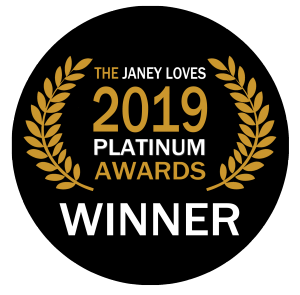

INTERVIEW WITH THE LOVELY LISA KENT 2016
Heather Dawn: Godfrey. P.G.C.E., B.Sc. (Joint Hon)
Based in San Antonio, Texas, USA, radio hosts Marc and Nikki share their special interest in promotion of natural medicine and the significant role plants play in managing and maintaining health and wellbeing.
I was delighted to be invited as a guest to discuss with Marc and Nikki the many ways of applying the qualities of essential oils safely and effectively. We talk about both topical and internal application and explore appropriate application and the boundaries of use, and discuss the wonderful effectiveness of essential oils when they are applied diligently, focusing particularly on their anti-microbial and skin restorative and regenerative, and psycho-emotional properties.
The interview begins 10 minutes in to the show.
 Click here to listen to the interview
Click here to listen to the interview
Click here for more information about Marc and Nikki and their radio show
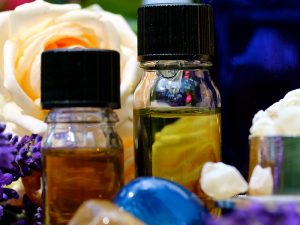 Click here for more information about how to apply and store essential oils safely
Click here for more information about how to apply and store essential oils safely
Click here for more information about what is an essential oil

The stillest point of a seesaw is at its pivoting center.
Meditation is the act of returning consciousness to the stillness at the centre of being.
Meditation techniques are vessels of focus and attention: like the cup that draws water from the depths of the well; water in this sense is the conscious experience of being in the moment.
Techniques applied to bring awareness to the moment draw attention to presentness, here and now, for example, include applying focus on the rhythm of breathing, listening to a sound, focusing on a visual object, even, the scent of a flower or perfume. Life unfolds one moment at time; the past is memory, the future, imagination – ‘now’ is seamless, borderless, but rich with the fullness of possibility and potential; paradoxically, both the seed and the fruit.
 Parables and metaphors, images, music and art in its many forms, are employed to express and convey a tangible sense of the intangible.
Parables and metaphors, images, music and art in its many forms, are employed to express and convey a tangible sense of the intangible.
Plants, with their chemical constituents and essential oils, express physical, practical, sensual, and also ethereal properties and qualities that support our health and wellbeing; nutrients and mineral that sustain growth and physical function, chemicals that repair and rebuild tissues and stave infection, and perfumes that attract, repel, protect and aid propagation and survival, while also being euphoric and transcendent. Edible plants provide food and medicine, thus are nourishing and healing; plant chemicals complement and support the chemistry within our body; plants and animals breathe together. Indeed, we share a symbiotic and mutualistic relationship with plants, including microorganisms, insects and other creatures that interact within the intricate web of life.
Plants as medicine
Not all plants are safe to consume; while some are nourishing, others are toxic and fatally poisonous to us. In minute amounts, however, certain toxic substances found within plants are medicinal and/or procure psychotropic properties; although potentially lethal, when consumed in controlled amounts these substances reduce pain, remove toxins and stimulate organ function, and induce altered states of perception/consciousness in a way that apparently supports spiritual ‘insight’. Both historically and presently these plants are prescribed and administered in controlled conditions and amounts by an experienced physician, medicine man or woman, or Shaman.
Plants and their derivatives are generally categorised according to their actions; for example, healing, euphoric and psychoactive.
Plants historically employed for their healing properties include, among many others, aniseed, dill, fennel, frankincense, ginger, peppermint and other herbs, rose, and sandalwood. Healing in this context includes soothing digestive aliments, improving and supporting organ function, circulation, skin conditions and wound healing.
Euphoric inducing plants include (from strong to mild, and used in moderate dose), cannabis, coca, kava, poppy seed, sage (Salvia divinorum), benzoin, clary sage, frankincense, nutmeg, and thyme linolool, among others.
Psychoactive inducing plants and fungi include, belladonna, deadly nightshade, henbane, mandrake, and fly agaric mushrooms, and high doses of cannabis, coca, kava, poppy seed, nutmeg, sage (Salvia divinorum), and valerian, among others.
You will notice essential oil bearing plants among these; for example, benzoin, clary sage, frankincense, nutmeg, rose, sandalwood, thyme linolool, and valarian. The chemical composition of an essential oil changes when separated from the plant, because the process of extraction changes the chemical mixture and leaves behind non-volatile components (see below). Essential oils comprise of a concentrated mixture of volatile organic terpene or terpenoid compounds.
According to Tisserand and Young (2014), there are virtually no psychoactive essential oils. Nutmeg essential oil, for example, even when consumed orally in high dose, is not psychoactive; however, this essential oil does procure a euphoric effect, with potential unpleasant side effects, such as, headaches, feelings of nausea and a sense of ‘distance’ and unreality, when consumed in high quantity. Clary sage is another example of a euphoric essential oil; this oil may be unpleasantly potentiated when mixed with alcohol.
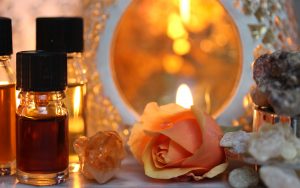 Thus, once extracted from the plant, an essential oil is rendered an entity unto itself; a concentrated mixture of volatile hydrophobic terpene and terpenoid phyto-chemicals.
Thus, once extracted from the plant, an essential oil is rendered an entity unto itself; a concentrated mixture of volatile hydrophobic terpene and terpenoid phyto-chemicals.
Some components are lost during the extraction process (steam distillation or solvent extraction), and some components are altered. For example, at high temperature, the chemical matricin degrades to form a new molecule, the blue-green coloured Chamazulene, which is not present within the plant (chamazulene is found in German Chamomile and Yarrow essential oil). C02 extracted German Chamomile, however, is non-coloured; the boiling point achieved using this method is considerably reduced, therefore, chamazulene is not created. (See my book, Healing with Essential Oils, for detailed explantation of this process).
Placing the high concentration of essential oils into perspective:
2,500 to 4,000 kg (5,511 to 8,818 pounds) of rose petals yields 1 kg (2.2 pounds) of essential oil.
1.4 kg (3lbs) of fresh lavender yields 15ml (or approximately 300 drops) of lavender essential oil.
One drop of essential oil is equivalent to 15-40 cups of medicinal tea, or up to 10 teaspoons of tincture (Krumbeck 2014). One drop of peppermint essential oil, for example, is equivalent to 26 cups of peppermint tea.
By comparison, the quantity of essential oil present in individual plants is minute; the amount of essential oil consumed when eating herbs or making herb tea is thus very small; also, other non-distillable components that act to counter balance the irritant or toxic qualities of essential oils are present in the plant but not in the extracted essential oil.
A ten-millilitre bottle of essential oil, therefore, is highly concentrated, very potent, and is consequently applied very differently to the plant or herb from which it derives.
NB: Essential oils are prescribed for internal ingestion by a medically trained healthcare professional, pharmacist, or herbalist (and this is the only context in which oral or rectal ingestion of essential oils should be administered), and are always interfused with a fixed vegetable oil and suspended in plant-based (hypromellose) or gelatin (collagen from animal skin or bones) capsules (the former being preferable for vegetarians), and are only administered following a thorough consultation ‘work up’; thus, dose is ideally controlled, safe, and appropriate.
Historical application of essential oils, plants and resins
As established previously, herbs and other essential oil bearing plants, roots and trees, have been applied medicinally throughout history; in the form of skin healing and antiseptic ointments and balms, environmental sanitisers, as perfumes, as antimicrobials to stave infections and disease, to alleviate digestive disorders, and for their psycho-emotional-spiritual calming, uplifting, grounding, invigorating, psychotropic and euphoric qualities.
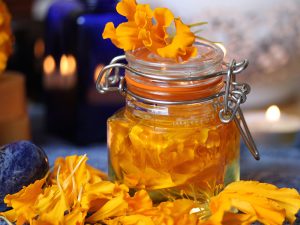 Essential oils were mainly extracted by soaking plant material in water, animal fat or oil (such as olive oil).
Essential oils were mainly extracted by soaking plant material in water, animal fat or oil (such as olive oil).
When plant material is macerated in boiling water to create teas, tinctures and tonics, or when it is soaked in animal fat, vegetable oil, or cooled distilled water, the volatile essential oils (along with other volatile and non-volatile phytochemical compounds, for example, flavonoids, chlorophyll, and carotene) are coaxed from their cells and cavities through osmosis, or through breakdown of oil-containing cell walls, or simply by being flushed or washed out of cavities.
Macerated oils, therefore, due to the presence of flavonoids and chlorophyll, are often richly coloured (orange, yellow, red, green); examples of such oils include arnica, carrot, and marigold (calendula).
Mary Magdalene famously anointed Jesus’s feet with perfumed oil of spikenard (or nard) that was likely obtained by steeping the crushed roots of this plant in warm olive oil (spikenard oil was imported from Asia- mainly India) – this oil was highly prized by the wealthy.
Incense derived from resins, such as frankincense, myrrh, galbanum, and from woods and bark, such as cedarwood, sandalwood, cinnamon and cassia, were, and still are, employed in social and religious ceremonies, rites of passage, and rituals.
Dried herbs, among them sage, rosemary, and thyme, were and still are ‘smoked’ or ‘smudged’ into the atmosphere to fumigate, stave the spread of disease, and dispel negative ‘spirits’ (or energies).
Indeed, there are numerous references made in historical scriptures and medicinal canons citing the use of essences of woods, resins, herbs, and spices for their hedonistic, medicinal, and spiritual qualities to aid meditation and prayer, relaxation and a sense of feeling grounded and uplifted, to promote a sense of peace, tranquillity and spiritual connection, and more. The Bible provides examples of these, some of which are listed below.
Dried resinous exudes of:
Balm of Gilead – a balsam tree, or shrub found historically in Jordon (the original biblical origin is uncertain, however, contenders include Mastic, Terebinth, Pine, among others). This resin produces a rare perfume, and a medicine that is applied to reduce inflammation, soothe the skin, protect the immune system, eliminate pain, speed healing, soothe the stomach, and detoxify the body.
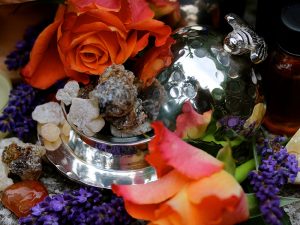 Frankincense (Boswellia) – a small tree, or shrub found historically in Oman, Yemen and the Horn of Africa, including Somalia and Ethiopia. The resin (which oozes from the bark of this tree) regulates and calms breathing, and supports meditation and inner tranquillity.
Frankincense (Boswellia) – a small tree, or shrub found historically in Oman, Yemen and the Horn of Africa, including Somalia and Ethiopia. The resin (which oozes from the bark of this tree) regulates and calms breathing, and supports meditation and inner tranquillity.
Myrrh (Comiphora) – a small thorny tree, or shrub found historically in North Africa and the Middle East. Myrrh is very difficult to grow. The resin from this tree is calming and revitalizing, regulates and calms breathing, supports meditation, and warms emotional coldness.
Benzoin styrax – a large shrub or small tree found historically found in Sumatra, Indonesia. This dried white resin eases nervous tension, is sedative and warming.
Galbanum – a hollow stemmed plant found historically in Iran (Persia). This white resin, which dries, turning yellow or brown in colour, is balancing, being both sedative and stimulant, is calming and eases anxiety, depression and low mood, is restorative to the nervous system, and is uplifting.
Labdanum (Cistus) – is a raw resin obtained from boiling leaves and twigs (historically collected from goats beards and sheeps wool – the resin attached to fir during grazing from the cistus shrubs) is harvested from small Cistus creticus and species of rockrose shrubs found historically in Mediterranean regions. This resin aids meditation, grounds mood and emotion and encourages a feeling of being centred.
Roots of:
Calamus (Sweet Flag) – a tall wetland flowering plant historically found in India, Asia, Southern Russia, and Central Europe (growing at edges of ponds, small lakes, rivers, marshes, swamps and wetlands) . The roots of this plant were used historically as an anointing oil, but also, stimulates and improves brain function, alleviates feelings of fear, and is bracing and grounding.
Spikenard (Nard) – this flowering plant belongs to the valerian family and was historically found growing in woods in Nepal (Himalayas), China, and India – oil extracted from the roots was obtained a luxury in ancient Egypt, Western Asia and Turkey. These roots balance the sympathetic nervous system with the parasympathetic nervous system (acts as a tonic to the sympathetic nervous system, and regulates the parasympathetic nervous system); calms restlessness, eases anxiety, grounds mood and emotion, and inspires a sense of peace and spirituality.
Bark of:
Cassia – an evergreen tree found historically in China, but cultivated in India and other southern and eastern Asian countries. Infused as a tea, oil or balm; antiseptic; as incense, uplifting and calming.
Cinnamon – is an evergreen ‘thick-barked’ tree historically found in India, Sri Lanka, Bangladesh, and Myanmar – highly prized by the ancients, and imported to Egypt over 2,000 years ago. Infused as a tea, oil or balm, antiseptic; as incense, uplifting and calming.
Also, the needles, leaves, roots, wood and bark of:
Cedarwood – a coniferous tree historically found in the northern and western mountains of the Middle East and known as Cedar of Lebanon. Species are diverse, ranging across various botanical families, including Pinaceae, Cupressaceae, and Meliaceae. As incense, aids meditation, calming, instils feeling of peace and sense of connection.
and the heart-wood (sawdust and chippings) of:
Sandalwood (possible cross reference with aloewood, oud, oodh, and agar – oud is a wood-like dark and fragrant resinous substance produced by the agar tree in reaction to parasitic mold infestation). A small heavy tropical tree historically found in South-east Asia, now cultivated in Northern Australia, India, China, Sri Lanka, Indonesia, Malaysia and the Philippenes. As incense, aids meditation, calms and harmonises the mind (racing thoughts and mental ‘clutter’)
Santalum album is endangered due to over harvesting. It takes years before the tree produces the essential oil. Santalum spicatum is grown and cultivated in Australia and is now the preferred Sandalwood of ecological choice.
Modern use and application of essential oils

Traditional and herbal medicine are still applied today in many parts of the developing world, however, in our modern industrial environment, essential oils are mainly (95%) produced and consumed by the food, flavour, perfume, cosmetic, and pharmaceutical industry.
Apparently, the top ranking essential oils used by these industries include, by highest quantity (between 12,000 and 1,300 tonnes):
Sweet orange, Mentha arvensis (Corn mint), Peppermint, Cedarwood, Lemon, Eucalyptus, Litsea cubeba (May chang), Clove leaf, Spearmint.
How do essential oils work as companions of meditation and as aids to reduce stress?
According to Kim et al’s 2016 systematic review of published research on the Influence of Fragrances on Human Psychophysiological Activity:
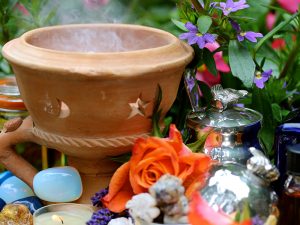 Inhalation of fragrances has significant effect on brain function due to the ability of fragrance compounds to cross the blood-brain barrier and interact with receptors in the central nervous system; olfactory stimulation of fragrances produces immediate changes in physiological parameters such as blood pressure, muscle tension, pupil dilation, skin temperature, pulse rate and brain activity.
Inhalation of fragrances has significant effect on brain function due to the ability of fragrance compounds to cross the blood-brain barrier and interact with receptors in the central nervous system; olfactory stimulation of fragrances produces immediate changes in physiological parameters such as blood pressure, muscle tension, pupil dilation, skin temperature, pulse rate and brain activity.
Concluding, they confirm that fragrances directly and/or indirectly affect the psychological and physiological conditions of humans; fragrances significantly modulate the activities of different brain waves and are responsible for various states of the brain (EEG testing); a number of studies scientifically support the beneficial use of various aromatic plants.
In another study exploring the effect of mindfulness meditation and the psycho-emotional influence of essential oils, Garcia et al (Soto-Vásquez & Alvarado-García 2017) found that, in combination, meditation and essential oils act synergistically to significantly reduce levels of anxiety.
The essential oils applied in this study (Satureja brevicalyx and Satureja boliviana – plants native to Peru) contain a high content of linalool, a phyto-chemical attributed with being ‘uplifting’, among other qualities, which the authors suggest attributed to the outcome.
The authors conclude that other essential oils containing linalool may potentially produce a similar effect and suggest, as an example, a blend of Ho wood, geranium and peppermint (peppermint does not contain linalool but in combination these oils create a similar chemical ‘fingerprint’ to the Peruvian oils).
Basil (linalool CT), lavender, neroli and petitgrain also contain high levels of linalool.
Other oils and resins that may support mediation include frankincense, myrrh, patchouli, rose, rosemary, spikenard and vetivert.
For example, Frankincense and patchouli slow and deepen breathing, and instill a sense of peace. Lavender and geranium balance and calm emotion. Rosemary aids memory and concentration. Vetivert is ‘grounding’.
Odour detection draws the perceivers’ awareness to their breathing, to the moment.
“Perfume and incense bring joy to the heart”. Proverbs 27:9
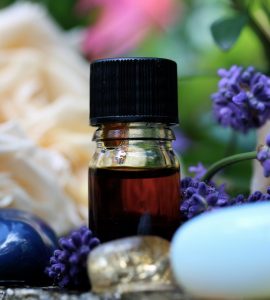 Qualities of essential oils that support meditation and ease feelings of stress include:
Qualities of essential oils that support meditation and ease feelings of stress include:
As a very general guide when applying the qualities of essential oils:
Conclusion
The qualities of essential oils are numerous; their scents draw the perceivers consciousness into the present moment; they influence mood and aid concentration; they protect, restore, and revitalise body and soul. They appear to be gifts of nature that supportively accompany our journey through life and time.

You will find details about the numerous qualities and properties of essential oils in my books:




The inspiration comes from within, but it is enhanced and clarified in many ways. My subject inspires me. My students and clients inspire me. The process of being a therapist and author inspires me. My sense of gratefulness inspires me. Writing itself inspires me. Sometimes I feel as though the words, the images, the inspiration filters ‘through me’, not from me…. perhaps this is an expression my higher self dancing with my physical self. My primary inspiration comes from the passion I feel for the subject I write about and my desire to share what I have learned – to help others as I have been helped and supported too, to grow and aspire.
How do I get into the ‘zone’ to write? No matter how inspired I may feel, I cannot always write ‘to order’. I find it hard to instantly switch from one mode to another when I am working creatively. If it’s a practical task, this is not so difficult; I just get on with it. But writing requires something deeper, more considered. I have to ‘get in touch’, I have to connect with a deeper part of my self and psyche…be in a place where I am completely open and honest, where I can hear my inner voice. To do this I need to step back from the ‘hum drum’; I need space and time to ‘go with the flow’. It can take a couple of days, sometimes, to switch off from other things and to focus, and then sometimes even longer for insights, thoughts, feelings, understanding, to manifest in a tangible form. I make lots of notes. I step back, and then return to my notes with a fresh perspective. Writing is a process with many layers. I can start with an idea, with a purpose, then I find the very act of writing, putting things onto paper, (or computer screen), acts as yet another catalyst that evokes deeper consideration…what I start off with begins to grow and develop as I bring it into the light. So, writers need time, space, peace…and self discipline….and material security…a fertile garden bed where seeds of thought and imagination, idea and understanding, can manifest and bloom….
Follow your passion. Don’t allow others to put you off. Be realistic. Plan your process. Set aside time. Give yourself a target timescale, a time-line framework, within which to complete your task; create a list of ‘steps and stages’; set reasonable goals and targets. Integrate time within your writing plan that allows you space to step aside, then return to your work. Ensure you can fund yourself without pressure. Balance is key! Run your ideas by others you trust, observe their response(s). Find objective proof readers (not just friends and family). Aim to finish your manuscript well before your deadline, so that you can put it aside, then return to it with a fresh, critical view (it’s so easy to become ‘word blind’ when engrossed in the content, the story). Read and correct your work several times before handing it to a publisher. Engage a proof-reader to scan
your work before you submit your final draft (at this stage, you will have already proof-read your work  yourself, and, no doubt, will have ‘run your work by’ others to check for oversights etc.) – select one person you trust. Learn to accept constructive criticism; don’t be too ‘precious’ about your work but, equally, stand your ground if necessary too. Allow yourself to learn from the process. Decide who you are writing for. Hold an image of the ‘person’ you are aiming your work at (audience…but it is better to think in terms of ‘a person’ rather than lots of people, it’s less scary and helps you to develop a relationship with them so you write with comfort…..I write to my future self when writing about practical topics, to remind myself of details I might have forgotten through the passage of time). Research your publishing options before you begin to write – there are pro’s and con’s to both self publishing and working with a professional publishing company – which route will benefit your work the best, what is the standard criteria/expectation for presenting your manuscript? In both instances, engaging the right support is crucial….don’t expect to do everything yourself…employ the expertise of others to ensure your finished product is professionally presented and the best that it can be. Don’t aim for perfection, but do everything to the best of your ability. Do not expect to make lots of money. Plan your process carefully and with realistic awareness so that you will enjoy every step of the way…..the journey is as significant and important as arriving at your destination.
yourself, and, no doubt, will have ‘run your work by’ others to check for oversights etc.) – select one person you trust. Learn to accept constructive criticism; don’t be too ‘precious’ about your work but, equally, stand your ground if necessary too. Allow yourself to learn from the process. Decide who you are writing for. Hold an image of the ‘person’ you are aiming your work at (audience…but it is better to think in terms of ‘a person’ rather than lots of people, it’s less scary and helps you to develop a relationship with them so you write with comfort…..I write to my future self when writing about practical topics, to remind myself of details I might have forgotten through the passage of time). Research your publishing options before you begin to write – there are pro’s and con’s to both self publishing and working with a professional publishing company – which route will benefit your work the best, what is the standard criteria/expectation for presenting your manuscript? In both instances, engaging the right support is crucial….don’t expect to do everything yourself…employ the expertise of others to ensure your finished product is professionally presented and the best that it can be. Don’t aim for perfection, but do everything to the best of your ability. Do not expect to make lots of money. Plan your process carefully and with realistic awareness so that you will enjoy every step of the way…..the journey is as significant and important as arriving at your destination.
How do you deal with writers block?
This is a very good question because it is a common phenomenon.
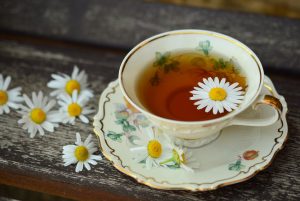 The first thing is, don’t panic. The second (and here I slip into a British cliche), put the kettle on and make a nice up of tea (or coffee).
The first thing is, don’t panic. The second (and here I slip into a British cliche), put the kettle on and make a nice up of tea (or coffee).
The point is, you can’t fight ‘writers block’; you have to befriend it, acknowledge it, sometimes just ‘sit with it’.
Writing, whether fiction or fact, is a creative process and, as with all creative endeavours, it cannot be forced. Creativity expresses itself best when it flows from the depths of our being; paradoxically, from a place of inspiration that is more than just mental construct or words.
Our mind and imagination are wonderful tools – brushes, paints, pallet and paper – but the seeds of vision stir in the wordless, formless, depths of, dare I say, the artists soul (we are all artists). The inspiration we feel within sometimes has to find form before it can emerge and tangibly manifest. Sometimes this form is readily available and our work flows effortlessly from within to without. Sometimes, though, it is illusive, not immediately available, and we ponder; we cannot force it into form until it is ready to emerge….so we wait, patiently, unconditionally.
The best thing to do with ‘writers block’ is to trust the process, stand aside and let it be. Go for a walk, take a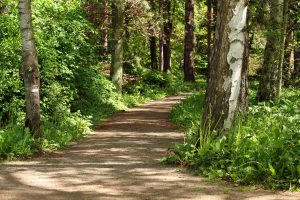 break, bake a cake, clean the car, meditate, whatever; distraction, used consciously, is a useful tool too, it eases the pressure, the intensity, thus allowing the formless to find form organically….but, keep a note pad with you so you can capture your words, impressions and images as they emerge, in their own time… while you go about intentionally ‘doing other things’.
break, bake a cake, clean the car, meditate, whatever; distraction, used consciously, is a useful tool too, it eases the pressure, the intensity, thus allowing the formless to find form organically….but, keep a note pad with you so you can capture your words, impressions and images as they emerge, in their own time… while you go about intentionally ‘doing other things’.
What’s the best thing about being a writer?
Being able to do something I love. I am very grateful to be in a position where I can find the time to devote to writing. I love words, their meaning, their colour, their resonance. I love painting pictures and creating images with words. I love the expression, the language of communication, of connecting, from soul to soul, awareness to awareness, person to person. I find writing to be a therapeutic process. I have always kept journals. Writing causes me to search for exactly ‘what I mean’, to be aware of the words I select, to stop and ponder, to reflect more deeply. As well as a form of expression, words, in this sense, also act as a mirror; the words I spontaneously select reveal my shadow self too. What’s the best thing about being a writer? Applying words as vehicles to convey meaning and expression, being able to communicate from my soul to your soul, to dispel any sense of isolation, to share wisdom and knowledge. The privilege of being a writer is the best thing.

Publications:
Essential Oils for Mindfulness and Meditation (Inner Traditions, Bear & Co., Vermont USA)

Essential Oils for the Whole Body (Inner Traditions, Bear & Co., Vermont USA)

Healing with Essential Oils (Inner Traditions, Bear and Co., Vermont USA)

 Heather Dawn: Godfrey. P.G.C.E., B.Sc. (Joint Hon)
Heather Dawn: Godfrey. P.G.C.E., B.Sc. (Joint Hon)
Where do I start? This seemed to be the biggest question, laden with the colours, shapes and shadows that suddenly burst into the foreground of my imagination. Yet, in the spirit of paradox, this was also the simplest, easiest question to answer… just do it!
Stripped back in the expression of this raw, uncluttered assertion, however, another, and probably the most significant, question was laid bare. Suddenly unveiled, free of the cloaking haze created by racing thoughts, confused hesitancy, procrastination, or even ambitious good intention, stark in its uncompromising nakedness the REAL question was: Do I absolutely, really, definitely, want to do it? Do I feel passionate and committed? Do I believe in what I want to do with all my heart, and with a level of conviction sufficient to fuel my tenacity during ‘stormy weather’, because no journey is ever filled with perpetual sunshine?
Juxtaposed, I stood at a crossroads. The opportunity before me may never visit again, putting it off until ‘later’ may not be an option – if I don’t do it now, I never will. There is never an absolutely ‘perfect moment’ (falsely fuelling procrastination, deceptively easing the choice to delay). There are always both reasons ‘to do’ and ‘not to do’. So it was, my mind and sensibility fused, the answer not purely logical, but passionate too, balance tipped, I took my leap of faith.
Even so, this was not a blind leap of faith. I carefully evaluated my situation, reviewed and planned my financial position to ensure I had sufficient funds, and created a realistic time frame within which to work. I had accumulated years of experiential and academic knowledge and had a wealth of information and insight to draw on. I grounded my ambition. And so, my journey began.
I started by reviewing the books of other authors writing about similar topics (what would I offer that was different, compounding, expanding), investigated their publishers, and other publishers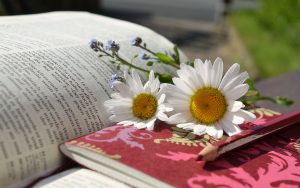 , and even considered self-publication (the choices seemed overwhelming). I drew up a list of possible publishers based on their compatibility with my subject genre. But first, before I could knock on anyones door, I had to have something tangible, a ‘product’ with which to gain their interest beyond a mere idea or imaginative concept. What would my book offer that others did not? What value would my work bring?
, and even considered self-publication (the choices seemed overwhelming). I drew up a list of possible publishers based on their compatibility with my subject genre. But first, before I could knock on anyones door, I had to have something tangible, a ‘product’ with which to gain their interest beyond a mere idea or imaginative concept. What would my book offer that others did not? What value would my work bring?
Everything contributes, is significant, to learning and comprehension (good, bad, positive, negative, mistakes, successes). Learning is a perpetual process. Experience, insight, knowledge and information form a web, each aspect a delicate thread connecting, contributing and shaping an intricate mutualistic network that captures the conceptual within its tangible form. Each thread is significant in its own right but is equally existent by virtue of attaching points that are subsequently built on and developed from.
My experiential journey, my intellectual comprehension, delving and questioning, my encounters with those I have met along my path and the messages they impart (teachers, experts, other authors, the magazine or journal articles read, conversations and deliberation with my peers or even a perfect stranger sat next to me in a cafe or on a train who I serendipitously share a conversation with), when spun together, form threads in the intricate web.
Who am I writing for?
My original decision to write was inspired by my clients and students – their enthusiastic, positive response to essential oils, their desire to learn and ‘grow’ their knowledge and understanding – and my own intrigued fascination as I observed the influence essential oils procure.
I work with a range of people in various contexts: as a therapist providing stress-reducing treatments to facilitating the learning of others (be they lay people, carers, therapists, or healthcare professionals). Thus, my objective was to create a practical yet sound foundation of knowledge aimed at the interested user of essential oils, student, and professional practitioner alike, a bedrock on which they could confidently continue to build and develop their own knowledge and experience.
I formulated a plan, a ‘map’ of the book, embracing the topics and subject area, which I organised into chapters (well, at least, the chapter titles and subheadings). Then I integrated a time frame into this map, setting targets and goals, to ensure I efficiently maximised my fleeting ‘window of opportunity’.
My first goal was to produce at least two or three chapters that would demonstrate the content, genre, and my writing style and skills. Even though I had already tested my writing ability through publication in related journals (the critique received from editors enlightening, invaluable, and supportive), the idea of producing a book seemed like jumping from a rowing boat to a ship.
Every writer has their own style of creative expression, but facts require delivery in universally comprehended dialogue. So, finding someone who would initially proofread for me was my next goal (a trusted friend who enjoys reading themselves is a reasonable starting point, although proof-reading does need to be done professionally later on). Objective feedback and critique sheds light on ‘blind spots’; we all have good and not so good writing habits, and perform better on some days and not so well on others.
The process of writing…
 I love writing, or, rather, I love words, their ‘colour’, meaning, and the pictures and images they create. However, in spite of my comprehension, imagination and verbal fluidity, writing does not come easily to me. Ideas, words and images abound in my imagination, dancing in my minds-eye, presenting a picture, but somehow seem to scatter chaotically in translation from thought to page.
I love writing, or, rather, I love words, their ‘colour’, meaning, and the pictures and images they create. However, in spite of my comprehension, imagination and verbal fluidity, writing does not come easily to me. Ideas, words and images abound in my imagination, dancing in my minds-eye, presenting a picture, but somehow seem to scatter chaotically in translation from thought to page.
I did not realise I was dyslexic until I was in my forties; I had simply assumed until then that I was not ‘very bright’ academically, especially as my early years at school often saw me in remedial groups because my spelling and writing were ‘behind’ that expected of my age group. Consequently, I absorbed a sense of being ‘stupid’ or ‘not very clever’ which affected my self confidence; although I did excel with almost exhausting effort toward the end of my schooling.
Objective feedback and critique sheds light on ‘blind spots’; we all have good and not so good writing habits, and perform better on some days and not so well on others.
Aware I need to work alongside my dyslexic trait, I compensate by integrating extra time that allows me space; for example, to work in ‘bursts’ and step away when my brain is saturated. Words pour forth, scatter onto the page and I have to re-read, correct and re-correct their order and flow, my spelling and grammar often erratic; words omitted or repeated twice, letters missed from the beginning, end or middle of a word, and often in the wrong order. My brain quickly becomes exhausted.
I write fluently by virtue of my ‘word processor’; my handwriting, although quite neat initially, quickly deteriorates into illegible scrawl after a few sentences, that even I cannot decipher. My notes quickly become chaotic, here and there, a messy ink splodge of crossing-outs, insertions and additional notes, aborted attempts and new starts, scribbled in various random note books and on spare pieces of paper, thoughts and ideas desperately captured before they disappear through the gaping net of my short-term memory. When I read, words can play tricks, disappearing or transforming into something else that my brain quickly reconstructs to compensate for their illusiveness. The effort required to work through this trait exhausts my brain and I sometimes, quite literally, cannot keep my eyes open and have to sleep, even just for five minutes. In this context, to write a book at all is at one and the same time inspired ambition and a huge challenge.
Being dyslexic, though, does not impede my awareness, imagination or ability to comprehend or communicate, and while ‘voicificying’ and translation of words into coherent written sentences is often problematic, it is not impossible. I find myself, as a consequence, exploring words more deeply, absorbing the colours and resonance of their meaning. I love the art of writing. In order to publicly write, even so, I had to let go of my self-defeating sense of clumsy imperfection, of not being ‘good enough’ – it’s ok for this to walk alongside with me, my shadow companion, but not to fall, like a self-fullfilling sacrifice, beneath my feet, tripping and arresting my steps. This is my journey.
Finding a publisher…
 Once the first chapters were complete, reviewing my list of potential publishers, I resumed my search. In view of my dyslexic trait, self-publication did not seem a sensible option. However, scrolling the internet, reviewing my choice of publishing companies, their background details and requirements, I again felt overwhelmed. They were all very similar in their requisite of prospective authors (the information they required, the non-committed assertion that a response could take several months and then with only a slight possibility of acceptance), but with little information about the author’s position. When I telephoned to enquire “what happens when a manuscript is accepted for publication”, the only answer I received was “it depends”, or “I will put you through to so-and-so who will answer your query”, and I found myself endlessly dangling ‘on hold’, my questions unanswered.
Once the first chapters were complete, reviewing my list of potential publishers, I resumed my search. In view of my dyslexic trait, self-publication did not seem a sensible option. However, scrolling the internet, reviewing my choice of publishing companies, their background details and requirements, I again felt overwhelmed. They were all very similar in their requisite of prospective authors (the information they required, the non-committed assertion that a response could take several months and then with only a slight possibility of acceptance), but with little information about the author’s position. When I telephoned to enquire “what happens when a manuscript is accepted for publication”, the only answer I received was “it depends”, or “I will put you through to so-and-so who will answer your query”, and I found myself endlessly dangling ‘on hold’, my questions unanswered.
I discovered that many renowned companies, although maintaining their individual ‘front cover’ identity, in fact, have been absorbed, taken over, by a handful of very large corporate organisations whom generally only accept manuscripts forwarded by an agent.
None of the information I gleaned or the responses to my enquiries I received filled me with any confidence. I could not risk sending my precious manuscript to a publisher who potentially would not respond for several months, especially given, by their own admission, the high possibility of rejection. Neither could I risk, for obvious reasons, sending my manuscript to several publishers at the same time to see who would accept my work. The time, effort, sacrifice and cost could not be justified through such an approach.
So, I reviewed the list again, specifically asking myself, ‘who can I trust to nurture and guide my effort, give constructive support and feedback, progress my book from draft to finished book ready for market?’
I decided to begin locally, and discovered a small ‘eco-friendly’ publishing company who appeared to tick all the right boxes. In deed, their exuberant, slightly over-the-top, sales pitch was persuading. They eagerly assured me they possessed the necessary ‘techno geek’ (their term) qualifications and professional experience to evolve my manuscript from written word to publication format. They produced examples of books they had already published, and enthusiastically confirmed they would be ‘delighted’ to publish my work. So, believing I had ticked the next box on my list, I set to and completed my manuscript.
However, the over-enthusiastic introduction, boasts and assurances of professional skills extolled by this company, crumbled to dust amongst the debris of meetings, attended but detail and objectives not followed through or nonchalantly deferred (their dynamic enthusiasm apparently withering, assertions and promises forgotten immediately, it seemed, on our departure from each other). The missed deadlines, unanswered emails and phone calls, the long uncomfortable silences, backed up against their door.
Two years from our first meeting, without consultation, contract implied but still not signed, and clearly flouting professional protocol, they published my work ‘over my head’, without consultation or preview, to my utter horror (they even billed me for the cost of this publication fo par). They incorrectly configured my work, deconstructing tables into plain text, making numerous unforgiving errors in the process (their professed professional expertise, a shattered illusion, shards of broken glass stabbing my ambition). Needless to say, we parted company, my book withdrawn from their possession, publication immediately arrested. Distressed and deeply disappointed, I seriously questioned my judgement. Choosing to believe their zealous rhetoric (as this is all it was, in the end), I ignored the warning signs, and, although I would not have predicted their ultimate audaciousness, like it or not, this experience forms part of my story, my journey. Let my lesson also teach you (as it uncomfortably did me) something about self-worth and the subtlety of collusion.
“Challenges are gifts that force us to search for a new centre of gravity. Don’t fight them. Just find a new way to stand.” Oprah Winfrey
Karma is a simple concept or principle, an objective process; cause and effect, we simply reap what we sow. And so it was (and is) for me. Although I do not take responsibility for their behaviour, I do take responsibility for my own. I did keep my end of the bargain and worked diligently to produce and promote my work to the best of my ability, delivering everything I promised. However, I learned a valuable lesson about the law of attraction and self worth, about not having the courage to ‘speak out’ sooner, or to stand up for and believe in myself and the value of my effort and ability. Our interaction should have ended when they glibly confessed to loosing my drawings, or after the first (of three) promised but missed publication deadlines, or when my gut screamed anxious warnings within me as we parted company from meetings. Yet, I allowed my self-doubt and sense of feeling small to obscure my better judgement. Thus, I colluded.
Good publishers respect their readers as well as their authors and produce books that people want to ‘own’, add to their collection, read and keep to re-read and lend to friends and family.
Dice shaken and thrown, I landed on the square that sent me sliding back to ‘go’ (and some). My search for a publisher began again. After much reflection though, this time, I found the courage to seek a publisher ‘I deserve’ and not one ‘good enough for me’. Oprah is right when she says, “You get in life what you have the courage to ask for.”
 I signed a contract in the summer of 2017 with Inner Traditions, Bear & Company, a well established professional American ‘eco-friendly’ (determined not to let my previous experience shatter all my belief) publisher with a proven track record for delivering well presented books in my genre, among others (as their publication catalogue testifies).
I signed a contract in the summer of 2017 with Inner Traditions, Bear & Company, a well established professional American ‘eco-friendly’ (determined not to let my previous experience shatter all my belief) publisher with a proven track record for delivering well presented books in my genre, among others (as their publication catalogue testifies).
Indeed, there is no comparison with my previous experience. Their ‘eco-friendly’ stance is actually grounded within a sound, proficient, thereby sustainable, business model. Extremely efficient and proactive, with clearly defined guidelines and boundaries, there is no ambiguity. Promises are kept, deadlines are met, communication is maintained, the author becomes ‘part of the team’, each an expert in our own field, and nothing is progressed without approval. Simple, yet proficient! My experience of working with Inner Traditions is, to my relief, extremely positive, and I have absolutely no reason to doubt that it will continue to be so; the adage ‘actions speak louder than words’ echoes, hauntingly rings, within me as I make this statement.
 My first book, Essential Oils for Mindfulness and Meditation, was published Autumn 2018, an award-winning, best selling new release, and was also published in Traditional Chinese in 2019. My second book, Essential Oils for the Whole Body, was published Autumn 2019 and also won an award (the Janey Loves Platinum Award 2020), and was also is also published in Traditional Chinese. My third book, Healing with Essential Oils, was published summer 2022, again, winning the Janey Loves Platinum Award 2022.
My first book, Essential Oils for Mindfulness and Meditation, was published Autumn 2018, an award-winning, best selling new release, and was also published in Traditional Chinese in 2019. My second book, Essential Oils for the Whole Body, was published Autumn 2019 and also won an award (the Janey Loves Platinum Award 2020), and was also is also published in Traditional Chinese. My third book, Healing with Essential Oils, was published summer 2022, again, winning the Janey Loves Platinum Award 2022.
So, you see, actions do speak louder than words, and, in spite of the entropy that pulls at the threads of our (my) faith and self belief, self confidence, tenacity and hard work do pay off in the end. I may not be a Pulitzer prize-winner (well, I couldn’t be anyway, apart from anything else, I’m British!) but I have happily reached my own mountain top with a deep sense of gratitude for the support and encouragement I encountered, and for the lessons I learned along the way!!!!








The journey from idea, pen to paper, to publication.
“You become what you believe, not what you think or what you want”. Oprah Winfrey
The readers experience of a book is as significant as its academic and/or creative content. Good publishers respect their readers as well as their authors, and produce books that people want to ‘own’, add to their collection, read and keep to re-read and lend to friends and family.
Getting a book published is not an ‘overnight’ process; patience and tenacity are significant requisites. And, while self motivation and a willingness to proactively promote your own work are a ‘must’, a certain degree of humbleness is also required to manage the ‘reality checks’ along the way.
Publishing is not a journey anyone can make entirely alone and synchronising the right support is as significant as writing the book in the first place (among other things, even for those who self publish, finding a good ‘proof- reader’ is an absolute must…..the truth is, no matter how proficient a writer, we all have ‘blind spots’ when it comes to our own work).
I have learnt so much, and continue to do so, as I travel through the process – the journey of learning and discovery is ongoing.
Your living is determined not so much by what life brings to you as by the attitude you bring to life; not so much by what happens to you as by the way your mind looks at what happens. – Khalil Gibran
This is the first book I have published, so I am still a novice, and my experience is limited. However, if I were share any advice based on what I have learned so far, it would be this:
My leap of faith has brought many challenges but also many pleasant surprises and, as my publishing journey continues to unfold, I am sure there will be many interesting and exciting encounters, learning curves and revelations yet to transpire.



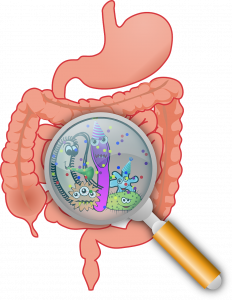
Heather Dawn: Godfrey. P.G.C.E., B.Sc. (Joint Hon)
The article below includes excerpts from my new book, Healing with Essential Oils, published by Inner Traditions, Vermont USA
The human micro biome consists of trillions of microbes, including bacteria and fungi, which symbiotically live in and on the body – on the skin, in the gut, and in cavities such as the mouth, ears and vagina. The micro biome plays a significant role in protecting and maintaining immunity, and aids a number of vital bodily functions: for example, assisting the breakdown and synthesis of nutrients in the gut and aiding their appropriate absorption, and providing a protective barrier against invasion or proliferation of harmful microbes and pathogens. We coexist with microorganisms; our body houses, feeds, and depends on their presence to maintain functional equilibrium. Poor diet, sugary refined foods, overuse of antibiotics and pharmaceutical drugs, stress, and illness, among other factors, can disrupt the harmonious balance of the micro biome, and increase our susceptibility to pathogenic invasion. (Essential Oils for the Whole Body 2019 p 70)
So, our first, long-lasting, line of defence, when considering immunity, is to support our micro biome (and thus also our health and vitality through increased opportunity of optimum nourishment – ease of absorption and assimilation of vital nutrients): eat nutritionally rich, fresh, 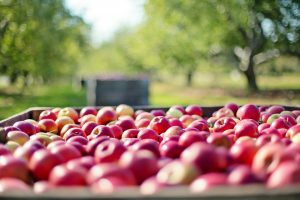 seasonal, unrefined, organic whole foods, especially green vegetables, fruits, nuts, beans and other legumes, herbs and spices, fermented foods, and so on; drink plenty of water to hydrate and oxygenate cells, and flush out waste material from the system; also, fresh air, sunlight (photochemical formation of vitamin D), walking (movement and motion) and gentle exercise (to stimulate peristalsis in the gut, stimulate the lymphatic system, and remove waste products efficiently from the body). A plants micro biome can feed the body’s micro biome too, so leave the skin on organic vegetables and fruits, and eat these raw or just lightly cooked. EMF’s (electromagnetic fields) also disrupt the micro biome, so limit exposure to these as much as possible (turn off computers, mobile phones, and other remote signalling devices when not in use).
seasonal, unrefined, organic whole foods, especially green vegetables, fruits, nuts, beans and other legumes, herbs and spices, fermented foods, and so on; drink plenty of water to hydrate and oxygenate cells, and flush out waste material from the system; also, fresh air, sunlight (photochemical formation of vitamin D), walking (movement and motion) and gentle exercise (to stimulate peristalsis in the gut, stimulate the lymphatic system, and remove waste products efficiently from the body). A plants micro biome can feed the body’s micro biome too, so leave the skin on organic vegetables and fruits, and eat these raw or just lightly cooked. EMF’s (electromagnetic fields) also disrupt the micro biome, so limit exposure to these as much as possible (turn off computers, mobile phones, and other remote signalling devices when not in use).
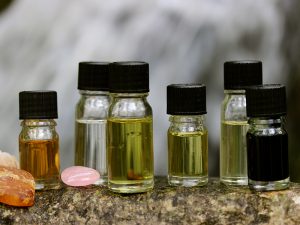 Essential oils to support the immune system
Essential oils to support the immune system
Essential oils are (with varying degrees of strength) anti-microbial, anti-fungal, anti-inflammatory, and mucolyptic. They also aid tissue regeneration.
Daily exposure to microbes enables the body to develop natural immunity. Remedies can be appropriately applied if and when required. Essential oil components number from a few to several hundreds – many are present in minute quantities, a few are present in large quantity. Their composition is complex. This means antimicrobial resistance to essential oils is potentially less likely than for conventional antibiotics; although, this cannot be taken for granted. See here for more information about applying essential oils safely, and using essential oils generally.
Essential oils are also very effective, even when applied in very small amounts, for psycho-emotional conditions (low mood, anxiousness, brain fog, etc.), for minor infections (coughs, colds, insect bites) and for skin conditions (cuts, grazes, eczema, dry skin, etc.).
For acute, potentially infectious conditions, severe cases of influenza, or other viral conditions, or for conditions you are unsure of, seek medical advice.
Powerful to moderate anti-microbial essential oils are listed below. Many of these essential oils are irritant and sensitising to the skin, mucous membrane and airways, especially when they are directly inhaled, even in small quantity, so apply them with careful consideration and in moderation.
All essential oils are highly concentrated volatile phyto-chemicals and, by their very nature, exhibit propensity to cause irritation, sensitisation, and sometimes an allergic reaction, especially if they are applied in large amounts, are over-used, or otherwise inappropriately applied.
Please note:
For comprehensive information about the safe and effective application of essential oils, how to blend them together, and much more, please refer to my book:

Meanwhile………
Click here for information about appropriate application of essential oils
Click here for information about measuring essential oils for personal use
Click here for information about methods of use
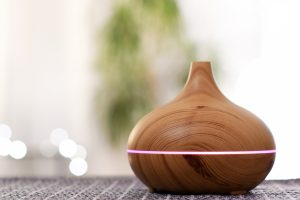 High quantity of essential oil is required to fumigate an environment (at least 30 drops – this will depend on the size of a room or space). To fumigate a room efficiently, close all doors and windows to contain the essential oil vapours, and diffuse essential oils into the atmosphere for 30 minutes. Leave the room during fumigation. Once fumigation is complete, open windows and doors to allow inflow of fresh air to clear residue vapours.
High quantity of essential oil is required to fumigate an environment (at least 30 drops – this will depend on the size of a room or space). To fumigate a room efficiently, close all doors and windows to contain the essential oil vapours, and diffuse essential oils into the atmosphere for 30 minutes. Leave the room during fumigation. Once fumigation is complete, open windows and doors to allow inflow of fresh air to clear residue vapours.
Herbs, such as sage, rosemary, and juniper can be used instead of essential oils – these are usually ‘smoked or smudged’, that is, smouldered, to cleanse the atmosphere.
Add up to 15 to 20 drops of essential oil to hand sanitisers (non-perfumed liquid soap dispensers). Do not add essential oils to antibacterial sanitisers or pre-scented sanitisers (it is not necessary and may cause an irritant reaction). Soap, itself, is antibacterial – soap and water (careful hand washing and drying) is usually sufficiently effective.
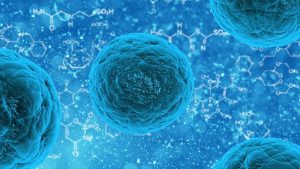 Essential oils with anti-microbial properties
Essential oils with anti-microbial properties
Please note that some of the essential oils listed below are strong irritants and sensitisers. Always check and reference the properties, qualities and contra indications of an essential oil before you apply it.
Examples of single essential oils with strong to medium anti-microbial properties
Cinnamon leaf and bark
Citronella
Clove bud
Eucalyptus blue gum and globulus
Geranium
Lavender
Lemon
Lemongrass
Pine
Tea tree
Thyme red
2-3 drops on a tissue and inhaled, 2-4 drops in steam inhalation, 2-4 drops in 10ml of carrier medium (vegetable oil, non-perfumed, lotion, cream, or aqueous gel) – do not use these blends in bath.
Click here for further instructions about methods of use
and
Click here for more detail about safe and appropriate application refer to my book (available at most book outlets) “Essential Oils for the Whole Body”
In addition to their antibiotic effects, oils react to a change of locality. From a distance this phenomenon seems to us to be the most important one, for, by changing the ecological condition which made possible the development and pathogenic growth of the germs, the oils stand in the way of their survival by preventing the body from building up resistances or adapting to the attacking agent. Better still, they protect against the return of the germs, both in the short and long term.
Dr Jean Valnet, 1980, The Practice of Aromatherapy, p47
Surely this is the key factor; the antiseptic power of essences does not diminish nor become blunted with the passing of time. Why not? it is hard to find a satisfactory answer, but perhaps it is because these natural substances, besides jugulating infections, reinforce the organism’s own defence mechanisms. They are in fact powerful alternatives. Furthermore, the organism does not appear to become accustomed to aromatherapy in the way that it does to synthetic sleeping pills, for instance, or – in the case of both body and germs – to the many forms of treatment using antibiotics.
Dr Jean Valnet, 1980, The Practice of Aromatherapy, p 45
References